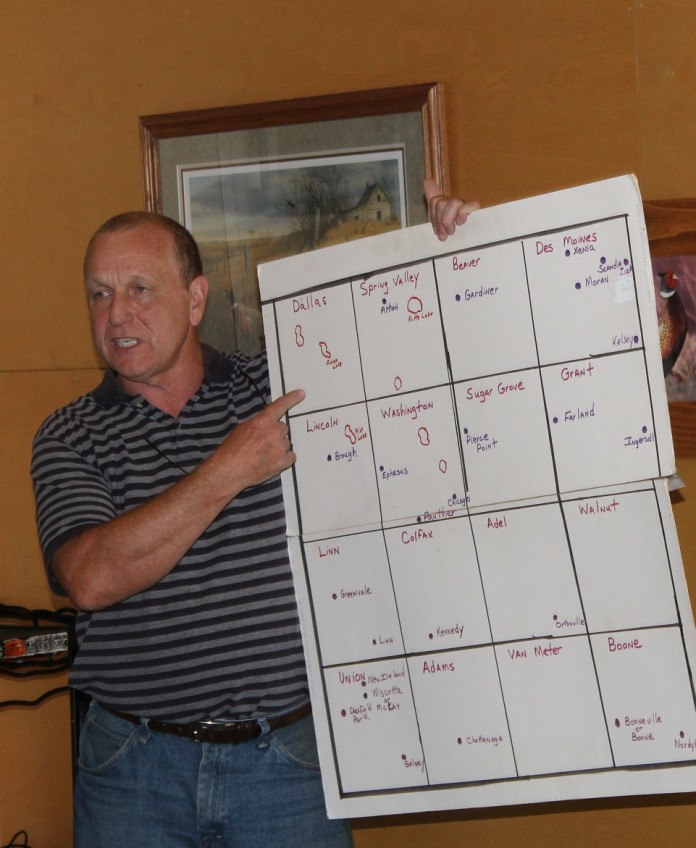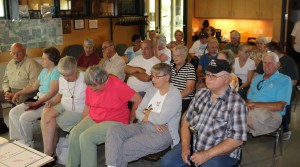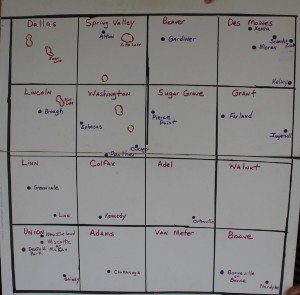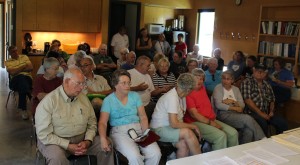
There was a time when people planned their day around a visit to Kennedy Station. Or maybe a trip over to Brough or to Wiscotta.

Locals used to ride out to Pilot Lake for an afternoon of swimming at the popular resort on the stagecoach line between Des Moines and Fort Dodge.
A dime would pay for a day’s admission to the big tourist draw of Dexfield Park, and if a tinsmith were needed, one was available at Panther, where an ice house was also located.
Those days, and those places, are now long gone, but it has become of mission of people like Rod Stanley to see that the memory of once bustling locales in Dallas County lives on.
Stanley was the guest presenter Sunday at the Forest Park Museum for “Ghost Towns of Dallas County,” a discussion and question-and-answer session that attracted an overflow crowd of interested history buffs and others simply hoping to relive old memories.

A former middle school history teacher with 35 years classroom experience, Stanley noted that “most of these places were not towns — they were never really incorporated — but they were important places, places that meant a lot to the people that lived there or lived nearby.”
Stanley said in the days before home delivery, citizens were forced to collect their own mail at a local post office, of which they were at one time 22 in Dallas County.
“Many of these places were little more than that,” he said. “There would be a post office, and maybe a house or two, and sometimes that would lead to a small general store, a blacksmith or some other small business. Many of these places were on or near a railroad line or on a stage coach route.”
Stanley focused his presentation on a few “places that once were” among the 16 townships of Dallas County, beginning with Brough, located in Lincoln township.

Brough sprang up around Pilot Lake, a bass and bluegill-stocked body of water that had a reported average depth of just five feet. In the 1850s and 1860s, a resort was built nearby, but the land was sold in the 1870s to a gentleman who drained the lake into Panther Creek, finding hundreds of buffalo skeletons once the water had seeped away.
“No one knew how they got there,” Stanley said. “The people figured maybe the Indians drove them into a marshy area while hunting, but no one really knows.”
Kennedy Station was located six miles west of Adel and just to the north of the current U.S. Highway 6. Situated along a narrow-gauge railroad, it boasted in 1879 a population of 19 and, according to Stanley, was “widely known as having the finest well water” in the county.
Panther Creek, founded in 1898, was another once well-known destination. At one time, a general store, blacksmith, tinsmith and barber were all available, as was an ice house.
Stanley also discussed Dexfield Park, an amusement park situated three miles north of Dexter. Opened in 1915, it closed for good in 1932.
Featuring a cement swimming pool, popular visiting musicians and other entertainments, admission was nine cents. A few years later, an additional penny “war tax” was added to the daily price to help offset the costs of the World War I.
“These places sprang up because of the need to trade and, of course, for gathering the mail,” Stanley said. “Not to be overlooked was the desire to socialize, as people were simply looking for something to do. Going ‘to town’ was an important part of life … it meant doing business, buying things you needed and, of course, having the chance to visit with other people.”
Many of the locales have entirely disappeared, while others are still noted by signs or markers that fewer and fewer people understand the significance of.
“All these places have stories to tell,” Stanley concluded. “It is up to each generation to keep those memories alive.”

















My great-grandfather and his father were both post masters for Xenia. Fred E. Preston and Zenas G. Preston. This is an interesting story. Thank you for sharing. I enjoy thinking about these lives, places, times gone by.